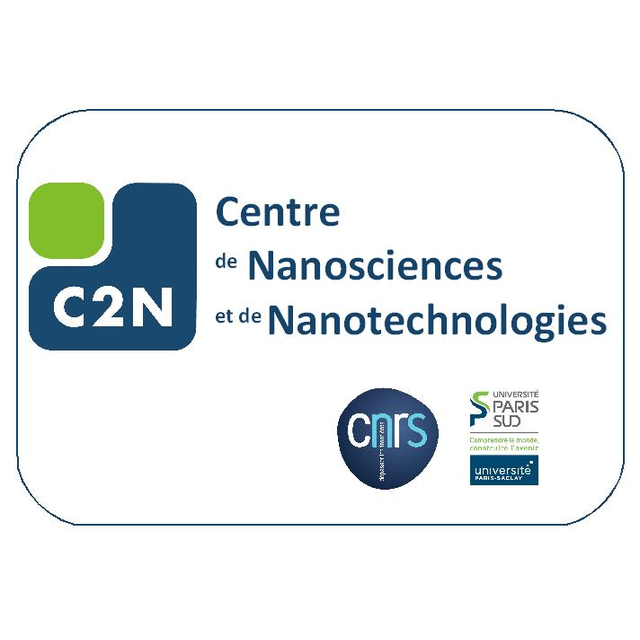
HdR defense

Enhancing photon-photon and spin-photon interactions with quantum-dot based light-matter interfaces
Département de Physique de l’Université Paris Diderot, amphithéâtre Pierre-Gilles de Gennes (niveau -1)., ParisHdR defense
Composition du Jury
- Prof. Gerhard Rempe, Max Planck Institüt für Quantenoptik
- Prof. Xavier Marie, Laboratoire de Physique et Chimie des Nano-Objets
- Prof. Thomas Coudreau, Laboratoire Matériaux et Phénomènes Quantiques
- Dr. Audrey Cottet, Laboratoire Pierre Aigrain
- Prof. Agnès Maître, Institut des Nanosciences de Paris
- Prof. Philippe Grangier, Laboratoire Charles Fabry de l’Institut d’Optique
How can we make single photons interact? This question represents a major challenge for the development of quantum technologies. In this presentation, I will show that efficient light-matter interfaces can be developed in the solid state to address this issue, using semiconductor quantum dots embedded in optimized microcavity structures. This led to a number of achievements in the last decade, including :
- The engineering of an effective photon-photon interaction, leading to an optical nonlinearity at the single-photon limit.
- The demonstration of an efficient spin-photon interaction, using the spin of a confined semiconductor hole as a stationary quantum bit.
- The development of near-optimal sources of pure and indistinguishable single photons for quantum optics.
The perspectives for realizing deterministic quantum gates and fundamental quantum experiments, based on a new generation of spin-based devices, will also be discussed.

Non-linear dynamics in active photonic crystals
C2N - Site Marcoussis, C2N site Marcoussis, salle R. Planel, MarcoussisHdR defense
This HDR focuses on fundamental aspects of the nonlinear interaction between light and matter in active –III-V semiconductor– photonic crystals. The combination of large nonlinear optical susceptibilities with high quality factors and small optical mode volumes of micro/nano optical resonators leads to a wealth of complex physical phenomena, even at a single cavity level: optical bistability, neuron-like spiking in the form of optical excitability, self pulsing dynamics... Their observation in novel micro and nano resonators has been a challenge over the past fifteen years. My work after my PhD thesis, carried out at LPN (now C2N) from 2004, has been devoted to this quest.
Beyond the single cavity limit, photonic crystal platforms offer new opportunities to study light matter interaction in arrays of coupled cavities. The interplay between photon tunneling and nonlinearity in multi-well optical potentials –or photonic molecules– is at the heart of many recent developments in quantum and nonlinear optics. As a central part of this HDR report I will focus on a key phenomenon taking place in double well potentials: the spontaneous mirror-symmetry breaking, which we have demonstrated for the first time at the nanoscale using two coupled nanolasers. The system undergoes a bifurcation from delocalized to localized states in the wells, which are mirror images of each other. I will show that, in order to achieve this goal, a thorough optimization of the coupled cavity system is needed in terms of both photon collection and, more importantly, the control of inter-cavity coupling. For the latter we have proposed an original photonic crystal barrier engineering design that enables not only a large tuning of the coupling strength, but also the control over its sign.
Unexpectedly, we found that the photon number at the bifurcation is about ∼ 150, which could even be further reduced by increasing the spontaneous β-factor of the nanolasers. We can thus predict such transitions with few intracavity photons in future nanolaser devices. Ultimately, signatures of quantum correlations could also be expected in future nonlinear coupled nanocavity devices close to symmetry breaking transitions.

(in french)
C2N -Site Orsay, Salle 044 (P. Grivet), orsay CedexHdR defense

Electrical Transport in Novel Materials with Perspectives in Neuromorphic Computing
, C2N-SITE orsay Salle P. Grivet (R-d-c pièce 44),HdR defense
The evolution of the transistor, from its first conception in the 1920s to its ultimate manifestation in today’s integrated circuits, tells in part the history of research in the device physics community. While research in the latter part of the 20th century often focused on developing new devices with novel materials, the approaching end of Moore’s law has ushered in a new emphasis on novel computing paradigms that push this community to focus on integrating new devices within what were once considered outlandish architectures. The research presented in this habilitation thesis defense follows along this main evolution in device physics. Starting with research exploring a novel silicon MOSFET, the Schottky barrier MOSFET, that in the 1990s was proposed as an alternative to conventional CMOS, my investigations of this device ranged from understanding the fundamental electronic transport over a wide range of temperatures. The most interesting results, nevertheless, are at low temperatures where transport involving single or small clusters of atoms modulate the transport allowing for spectroscopy, and observations of quantum interference. The discovery of high temperature superconductivity in 1986 in novel ceramic oxides ushered in a flurry of research on these and related materials. One remarkable discovery was colossal magnetoresistance in magnetic oxides in which the interplay between electronic, magnetic and structural degrees of freedom continues to give rise to research surprises. In this context, I explored the quantum corrections that arise in the model LaSrMnO3 manganite thin film and show how one can obtain the phase coherence length. Finally, as the community has migrated from exploring devices for possible applications towards novel architectures, the final part of defense will explore how novel computing paradigms. A first approach explores the use of conventional C-element circuit in a stochastic computing setting to demonstrate Bayesian inference. Next, I explore an analogy between second order phase transitions and overfitting in the extreme learning algorithm. A third project presents how a Schottky barrier nanowire dressed with redox molecules can be used as a memristor. Finally, I conclude with my research perspectives where I plan to exploit my knowledge of device physics and statistical mechanics to realize bio-inspired hardware.